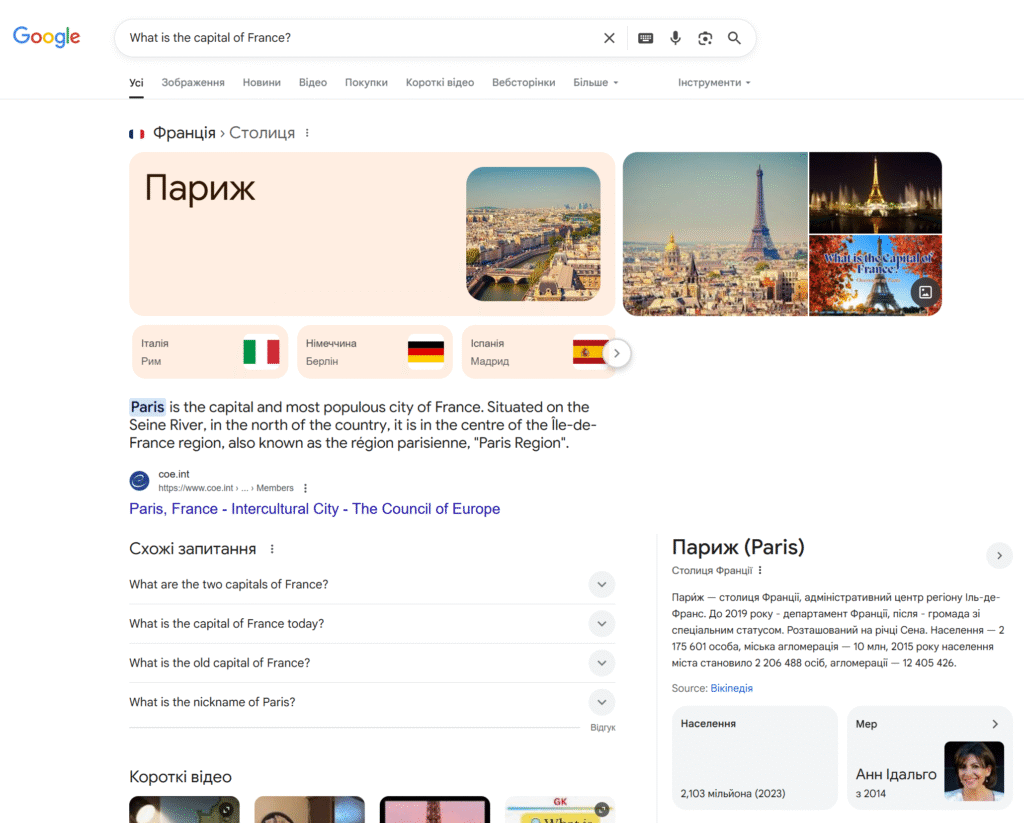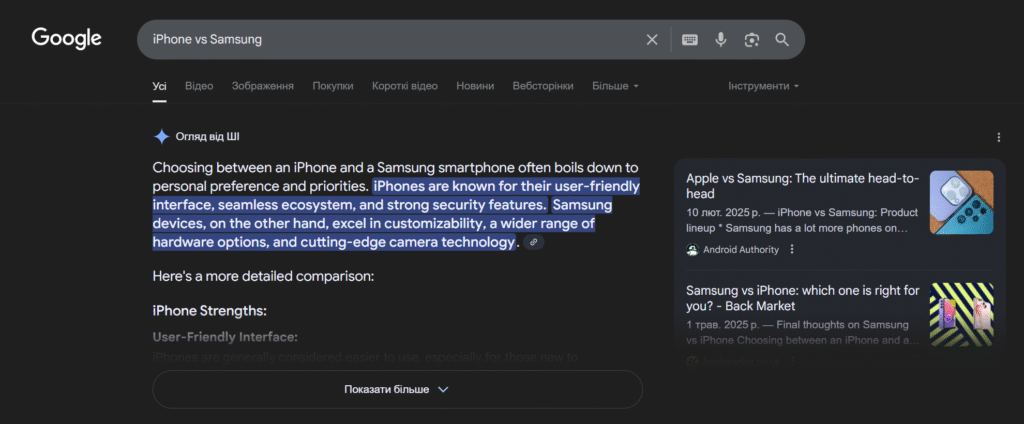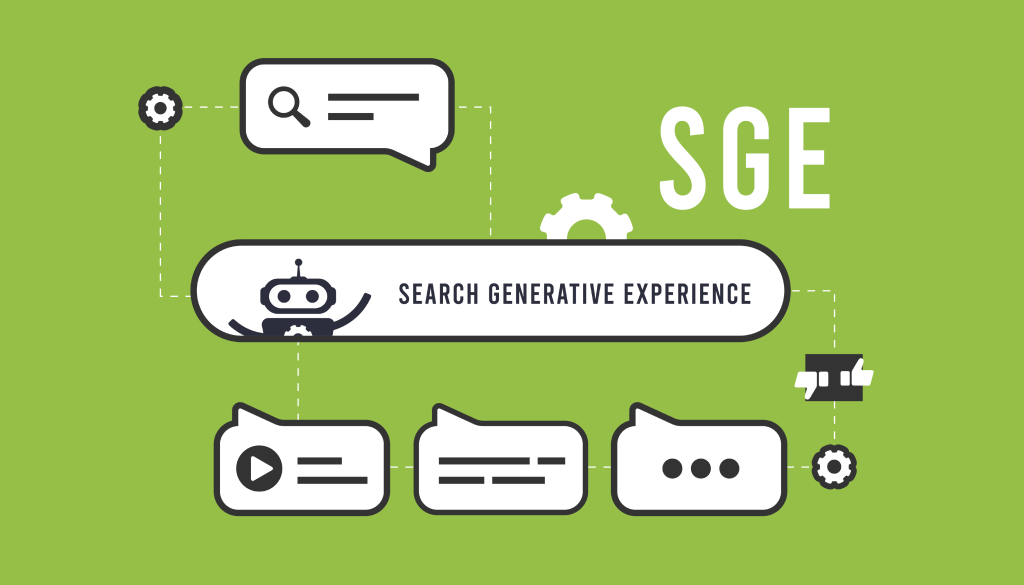A few months ago, I noticed something strange happening in Google’s search results.
Instead of the usual 10 blue links, I started seeing AI-generated answers at the top of search results. At first, I thought it was just another Google experiment that would fade away.
Boy, was I wrong.
What I was seeing was Search Generative Experience (SGE) – and it’s now rolling out to nearly half of all Google searches.
Today, I’m going to show you exactly what SGE is, how it works, and most importantly: how to optimize your content to get featured in these AI-powered results.
Let’s dive right in.
What is Search Generative Experience?
Search Generative Experience is Google’s new way of answering search queries using AI.
Instead of just showing you a list of websites, SGE creates a comprehensive answer by pulling information from multiple sources across the web.
Here’s an example:
Let’s say you search for “best protein powder for weight loss.”
In the old days, you’d see:
- A featured snippet from one website
- 10 blue links to different articles
- Some ads
With SGE, you now see:
- An AI-generated overview that synthesizes information from 5-10 sources
- Key points organized under clear headings
- Follow-up questions you can ask
- Traditional search results below
The result? According to a 2024 study by Rand Fishkin of SparkToro, 58.5% of Google searches in the United States ended without a click.
That’s a massive shift in user behavior.
The 3 Types of SGE Results
Through my analysis of hundreds of SGE results, I’ve identified 3 main types:
Type 1: The Quick Answer

This is for simple, factual queries like “What is the capital of France?“
SGE provides a direct answer with minimal additional information.
Type 2: The Comprehensive Overview

This is where SGE really shines. For complex topics like “how to start a podcast,” SGE creates a detailed, step-by-step guide pulling from multiple expert sources.
Type 3: The Comparison

When you search for “iPhone vs Samsung,” SGE creates a side-by-side comparison highlighting key differences, pros, and cons.
Why SGE is a Game-Changer (And Why Most Marketers Are Missing the Point)
Here’s what most people don’t realize:
SGE isn’t just another Google update. It’s a fundamental shift in how people consume information online.
Let me explain with a real example from my own experience:
Last week, I was researching “email marketing automation tools” for a client. Instead of clicking through 10 different comparison articles, I got everything I needed from SGE’s overview.

The result included:
- Top 5 tools with brief descriptions
- Pricing information
- Key features comparison
- Best use cases for each tool
I never clicked on a single website.
This is happening millions of times per day, and it’s completely changing the SEO landscape.
The SGE Optimization Framework
After studying thousands of SGE results, I’ve developed a framework for optimizing content to get featured.
I call it the A.U.T.H.O.R. method:
Authority Usability
Topical depth Helpful structure Optimized format Relevant citations
Let me break down each element:
Authority: Become the Go-To Source
Google Search Generative Experience (SGE) is a new approach to search results. It’s an experimental search experience that uses generative artificial intelligence (AI) to provide users with quick and clear overviews of search topics – without having to click on individual webpages.
But here’s the key: SGE doesn’t cite random websites. It cites authoritative sources that Google trusts.
To build authority:
- Publish in-depth, researched content
- Include expert quotes and data
- Build high-quality backlinks
- Demonstrate expertise in your field
Usability: Make It Easy to Consume
SGE loves content that’s easy to digest. This means:
- Clear headings and subheadings
- Bullet points and numbered lists
- Short paragraphs (2-3 sentences max)
- Logical flow of information
Topical Depth: Cover Everything
Thin content is dead in the SGE era.
Instead of writing a 500-word article about “email marketing,” write a comprehensive 3,000-word guide covering:
- Email marketing basics
- Platform comparisons
- Best practices
- Common mistakes
- Advanced strategies
Helpful Structure: Answer the Question First
Here’s a pattern I’ve noticed in SGE-featured content:
The answer to the main question appears in the first 100 words, followed by supporting details and examples.
For example, if someone searches “how to optimize for voice search,” start with:
“Voice search optimization involves creating content that answers questions conversationally, using natural language patterns, and targeting long-tail keywords that people speak rather than type.”
Then dive into the details.
Optimized Format: Use Multiple Content Types
SGE pulls from various content formats:
- Text-based articles
- Images with descriptive alt text
- Videos with detailed descriptions
- Data tables and charts
- FAQ sections
Relevant Citations: Link to Quality Sources
Just like SGE cites multiple sources, your content should reference authoritative sources, studies, and expert opinions.
This builds trust and increases your chances of being cited.
The 5-Step SGE Optimization Process
Here’s the exact process I use to optimize content for SGE:
Step 1: Identify SGE-Eligible Queries
Not all queries trigger SGE. Through my research, I’ve found that SGE most commonly appears for:
- How-to queries (“how to start a blog“)
- Comparison queries (“WordPress vs Squarespace“)
- Definition queries (“what is content marketing“)
- Best-of queries (“best email marketing tools“)
Use tools like SEMrush or Ahrefs to find these query types in your niche.
Step 2: Analyze Current SGE Results
Before creating content, study what’s already working.
Search for your target keyword and analyze:
- What sources does SGE cite?
- How is the information structured?
- What angle does the AI overview take?
- What information is missing?
Step 3: Create Superior Content
Your goal isn’t to copy what’s already there – it’s to create something better.
This means:
- More comprehensive coverage
- Better structure and readability
- More recent information
- Unique insights or data
Step 4: Optimize Technical Elements
Make sure your content is technically sound:
- Fast loading speed
- Mobile-friendly design
- Proper schema markup
- Clear URL structure
- Optimized images
Step 5: Monitor and Iterate
Track your SGE mentions using tools like:
- Google Search Console
- SEMrush’s AI Overview tracking
- Manual searches for your target keywords
Real-World SGE Success Story
Let me share a case study from one of my clients:
The Challenge: A B2B SaaS company wanted to rank for “project management software comparison.”
The Problem: Their existing content was a basic comparison table with minimal detail.
The Solution: We created a comprehensive guide that included:
- Detailed feature comparisons
- Pricing analysis
- User reviews and ratings
- Use case scenarios
- Implementation guides
The Result: Within 3 months, the content was featured in SGE for 15+ related queries, driving a 40% increase in qualified leads.
The Future of SGE (And What It Means for Your Strategy)
“AI Overviews and more” has replaced the Search Labs experiment known as SGE (Search Generative Experience).
This evolution shows that Google is doubling down on AI-powered search results.
What does this mean for your SEO strategy?
- Quality over quantity: One comprehensive piece that gets cited by SGE is worth more than 10 thin articles that don’t.
- Focus on expertise: Generic content won’t cut it. You need to demonstrate real expertise and authority.
- Think beyond clicks: Even if SGE reduces direct traffic, being cited builds brand awareness and credibility.
- Adapt your metrics: Track SGE mentions and brand visibility, not just organic traffic.
Common SGE Optimization Mistakes (And How to Avoid Them)
After helping dozens of clients optimize for SGE, I’ve seen these mistakes repeatedly:
Mistake #1: Trying to Game the System
Some marketers try to stuff their content with keywords or use manipulative tactics to get SGE citations.
This doesn’t work. SGE is designed to surface genuinely helpful, authoritative content.
Mistake #2: Ignoring User Intent
Creating content that technically answers the query but doesn’t truly help users.
SGE rewards content that genuinely solves problems and provides value.
Mistake #3: Focusing Only on Text
SGE considers multiple content formats. Don’t limit yourself to just text-based content.
Mistake #4: Not Updating Content
SGE favors fresh, up-to-date information. Regularly update your content to maintain relevance.
Your SGE Action Plan
Here’s what you should do starting today:
Week 1: Audit your existing content
- Identify top-performing pages
- Check which ones could be SGE-eligible
- Note gaps in coverage
Week 2: Research SGE opportunities
- Find SGE-eligible keywords in your niche
- Analyze current SGE results
- Identify content gaps
Week 3-4: Create/optimize content
- Apply the A.U.T.H.O.R. framework
- Focus on comprehensive coverage
- Ensure technical optimization
Week 5: Monitor and measure
- Track SGE mentions
- Monitor traffic changes
- Adjust strategy based on results
The Bottom Line
Search Generative Experience is here to stay, and it’s changing how people find and consume information online.
The brands that adapt quickly will dominate the next decade of search.
The question isn’t whether SGE will affect your traffic – it’s whether you’ll be the source it cites or the one it replaces.
Start optimizing today, and you’ll be ahead of 90% of your competition.
References:
- SparkToro 2024 Zero-Click Search Study – https://sparktoro.com/blog/2024-zero-click-search-study-for-every-1000-us-google-searches-only-374-clicks-go-to-the-open-web-in-the-eu-its-360/
- Google Search Labs – https://labs.google.com/search/
- Google AI Overviews Help Center – https://support.google.com/websearch/answer/13572151
- Google’s Official SGE Blog Post – https://blog.google/products/search/generative-ai-search/
- Datos & SparkToro State of Search Q1 2025 Report – https://datos.live/report/state-of-search-q1-2025/
- SEMrush Guide to Google SGE – https://www.semrush.com/blog/google-sge/
Is a senior SEO expert with over a decade of experience dominating the digital marketing battlefield. Since 2023, I’ve been riding the AI wave. Since 2024, I have started to work with the SEO Bazooka Blog.

Leave a Reply